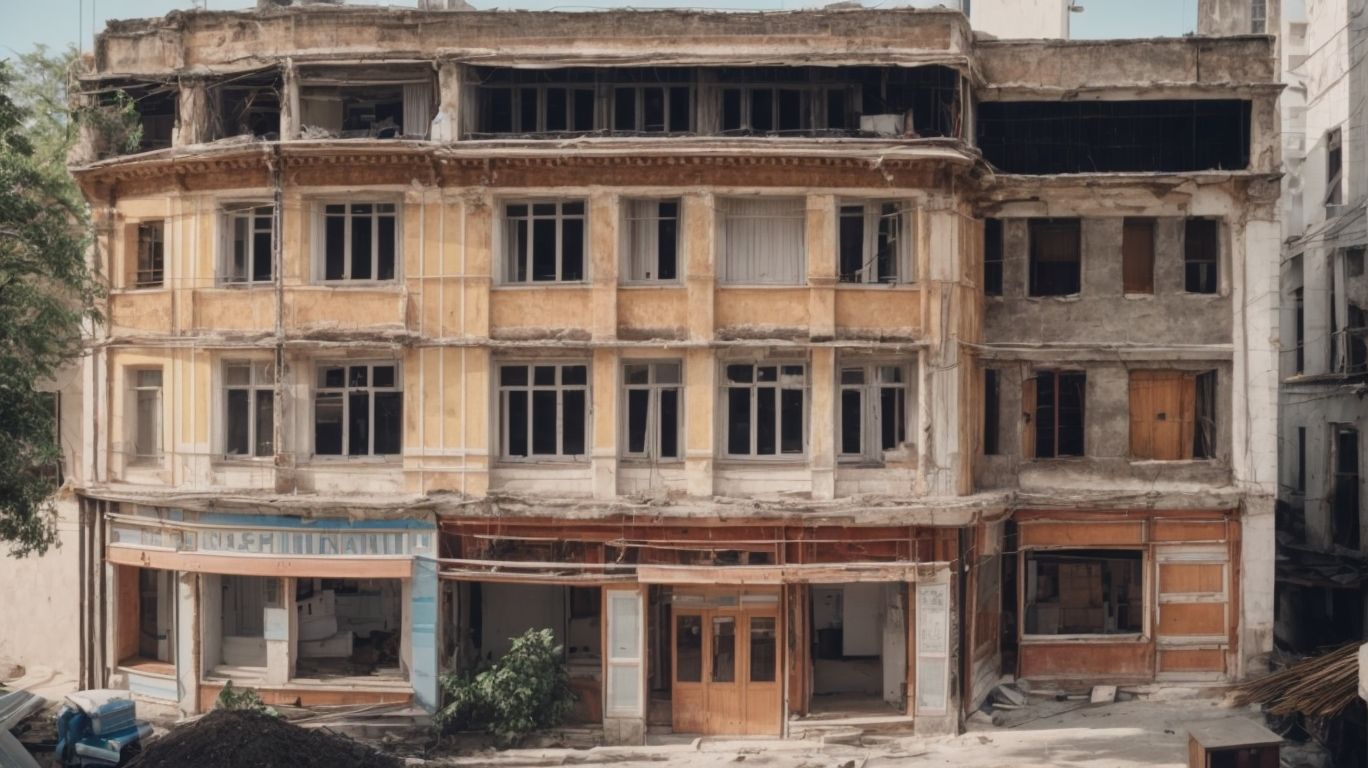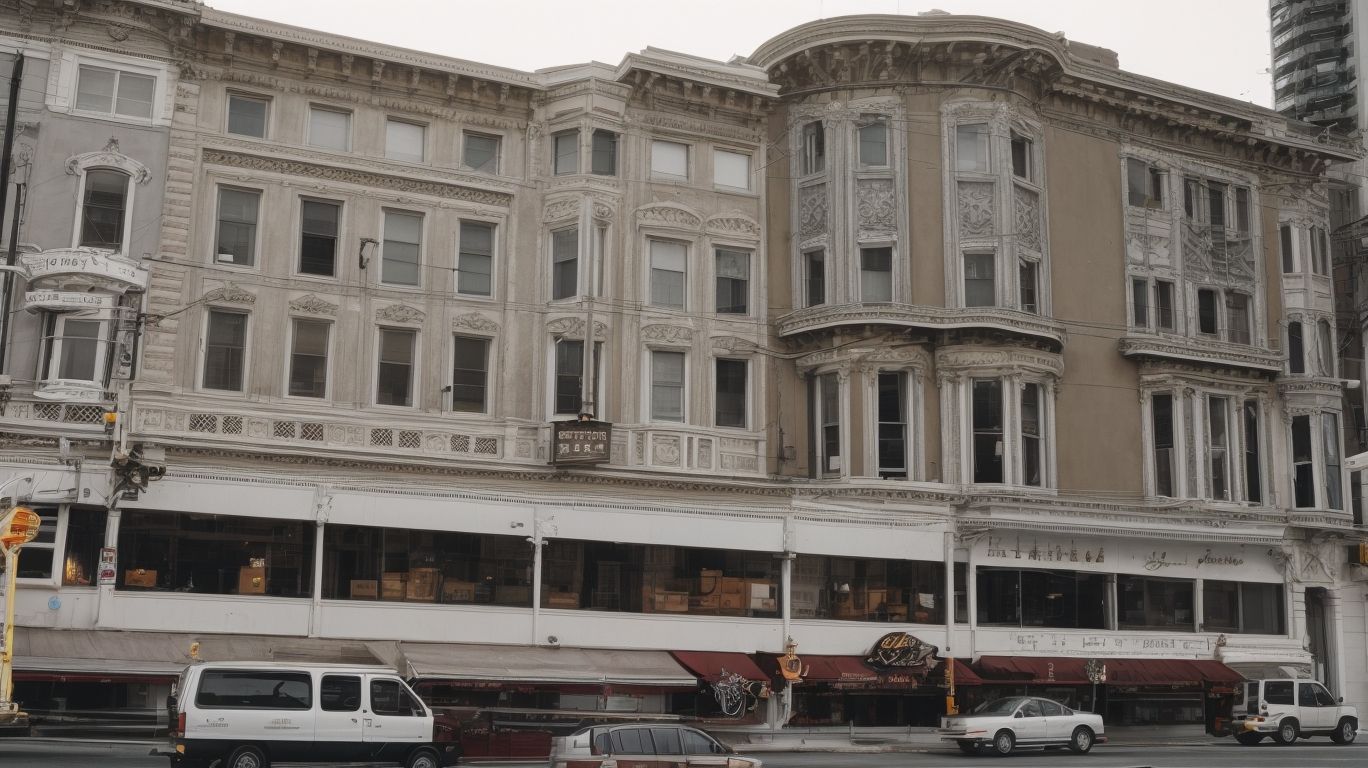
A Glossary of Soft-Story Retrofitting Terminology
Soft-story retrofitting is a crucial process for ensuring the safety and stability of buildings in earthquake-prone areas. In this article, we will explore the different types of soft-story retrofitting, including shear wall retrofit, moment frame retrofit, and steel braced frame retrofit.
We will delve into the common terms used in soft-story retrofitting, such as seismic retrofit, lateral load, and structural engineer. Whether you’re a property owner or a construction professional, understanding these terms is essential for navigating the world of soft-story retrofitting.
What Is Soft-Story Retrofitting?
Soft-story retrofitting is a crucial structural engineering technique that focuses on strengthening and reinforcing buildings, particularly their vulnerable soft-story areas, to mitigate the seismic risks and enhance building performance.
This engineering approach aims to address the potential collapse of these weak areas during earthquakes, thus safeguarding occupants and minimizing property damage.
By anchoring the lower level of the building with additional structural support, soft-story retrofitting ensures better load distribution and improved resistance to lateral forces.
Adhering to specific building codes, such as the International Existing Building Code (IEBC) and local regulations, is essential throughout this process to ensure compliance with safety standards and structural integrity.
Why Is Soft-Story Retrofitting Important?
Soft-story retrofitting holds immense importance due to its ability to address the vulnerability of buildings to seismic activity, improve building performance, and reduce the risks identified through comprehensive risk assessments, thereby facilitating necessary structural upgrades.
This retrofitting process plays a crucial role in ensuring the safety of occupants and minimizing potential damage in the event of an earthquake.
By strengthening the lower levels of structures, it enhances their resistance to seismic forces, contributing to overall structural stability.
Through thorough risk assessments, engineers can identify weaknesses and develop tailored retrofitting strategies, ultimately bolstering the resilience of buildings in high-risk seismic areas.
What Are The Different Types Of Soft-Story Retrofitting?
Soft-story retrofitting encompasses various types, including shear wall retrofit, moment frame retrofit, and steel braced frame retrofit, each offering distinct structural solutions to enhance the building’s seismic resilience and stability.
Shear wall retrofitting involves reinforcing the existing walls with plywood or steel to increase their ability to withstand lateral forces. This makes it ideal for buildings with open parking or commercial space on the ground floor.
Moment frame retrofitting provides added reinforcement through the installation of steel frames to strengthen the building’s ability to resist seismic movements. This makes it suitable for structures with large openings, such as storefronts.
Steel braced frame retrofitting utilizes steel braces to enhance lateral stability, often applied to buildings with irregular layouts and varying floor heights.
Shear Wall Retrofit
Shear wall retrofitting involves the installation of strong vertical elements to facilitate efficient load transfer and enhance the overall stability of the building, thereby mitigating the seismic forces and ensuring structural integrity.
Vertical elements, such as reinforced concrete or steel, are strategically placed to resist lateral forces and distribute them to the building’s foundation.
Shear wall retrofitting is crucial in minimizing potential damage from earthquakes by redirecting structural loads and controlling the building’s response to seismic activity. This method effectively strengthens existing structures against seismic hazards and is a cost-effective solution.
Moment Frame Retrofit
Moment frame retrofitting focuses on enhancing the building’s ability to withstand lateral forces generated by seismic events through the strategic implementation of robust frame designs and construction techniques, ensuring effective retrofit designs.
This process involves reinforcing the existing structure with additional materials and strengthening connections where necessary, ultimately improving the building’s overall resistance to seismic activities.
By carefully evaluating the specific needs and vulnerabilities of each building, engineers can develop tailored retrofit designs that prioritize safety and structural integrity.
Incorporating advanced technologies and materials further contributes to the effectiveness of moment frame retrofitting, allowing for more resilient and durable structures that can better withstand the impact of seismic forces.
Steel Braced Frame Retrofit
The steel braced frame retrofitting method involves the construction of robust steel frames within the building’s structure. This effectively reinforces its seismic resilience and enhances its overall stability through meticulous retrofit construction processes.
This retrofit technique offers significant advantages in enhancing the building’s ability to withstand seismic forces and improve its overall performance during earthquakes. The process involves carefully designing and installing steel braced frames, which act as a critical component in dissipating seismic energy and maintaining structural integrity.
Retrofit construction techniques, such as precise welding and anchoring, contribute to the seamless integration of steel braced frames into existing structures. This ensures a durable and resilient building system. These retrofit solutions play a pivotal role in increasing the overall safety and longevity of buildings in earthquake-prone regions.
What Are The Common Terms Used In Soft-Story Retrofitting?
In soft-story retrofitting, various common terms and technical jargon are frequently used, such as foundation bolting, design considerations, and structural analysis techniques, which form an essential part of the retrofitting glossary and terminology.
These terms are crucial for understanding the complexities involved in retrofitting soft-story buildings.
Foundation bolting, for instance, refers to the process of securing a building’s foundation to resist seismic forces. Design considerations encompass factors like load distribution and material selection, influencing the overall retrofitting strategy.
Structural analysis techniques help engineers assess the building’s stability and develop tailored retrofitting solutions. Understanding and applying these terms is fundamental to ensuring the effectiveness and safety of soft-story retrofitting projects.
Soft-Story Building
A soft-story building refers to a structure with open or weak lower floors that are vulnerable to seismic activity, thereby necessitating retrofit measures to ensure compliance with building codes and enhance its structural integrity against potential vulnerabilities.
Soft-story buildings often have large windows or open spaces on the ground floor, making them vulnerable to buckling or collapse during earthquakes. This has led to building codes and ordinances requiring extensive reinforcement measures, such as adding steel frames or braces.
It is crucial to address the structural vulnerability of these buildings to minimize the risk of damage, injury, and loss during seismic events. Taking proactive steps to retrofit soft-story buildings is imperative in ensuring the safety and stability of these structures.
Seismic Retrofit
Seismic retrofitting involves the implementation of structural solutions and building upgrades to reduce the vulnerability of structures to the forces generated by earthquakes, thereby enhancing their resilience and mitigating potential damage.
This practice plays a crucial role in ensuring that buildings and infrastructure can withstand seismic events, protecting lives and minimizing economic losses.
By reinforcing key structural elements, such as foundations, walls, and roofs, seismic retrofitting strengthens the overall integrity of a building.
It involves the use of advanced materials and innovative engineering techniques to effectively enhance the seismic performance of structures, contributing to a safer built environment for communities in earthquake-prone regions.
Lateral Load
Lateral loads in the context of seismic engineering refer to the horizontal forces acting upon a structure, necessitating efficient load transfer mechanisms to ensure building stability and enhance its overall seismic performance.
Lateral loads, also known as seismic forces, exert pressure sideways on a building, posing a significant challenge for structural engineers. The goal is to create a system that can effectively distribute these forces, preventing disproportionate stress on any specific area of the structure.
This entails considering the building’s mass, stiffness, and flexibility to adequately absorb and dissipate the seismic energy. By understanding lateral load and its impact on seismic performance, engineers can design buildings that withstand seismic events, ensuring the safety and resilience of the structure.
Seismic Load
Seismic load represents the dynamic forces exerted on a structure during an earthquake, posing risks to its stability and performance. Effective mitigation measures are necessary to address seismic vulnerability and enhance building resilience.
These dynamic forces can lead to structural damage, compromising the safety of occupants and the functionality of the building. It is crucial to understand the implications of seismic load on building performance in order to develop resilient structures that can withstand seismic events.
Mitigation measures, such as base isolators, damping systems, and reinforced structures, play a vital role in reducing the impact of seismic load, minimizing potential damage, and enhancing overall structural integrity.
Dead Load
Dead load refers to the static weight of a structure and its permanent fixtures, influencing the need for structural upgrades, the application of retrofitting techniques, and efficient load transfer mechanisms in compliance with building codes and safety standards.
This concept is crucial in the field of civil engineering as it directly impacts the stability and durability of buildings and infrastructure. Understanding how dead load affects structures is imperative when designing new constructions and evaluating existing ones.
Building codes necessitate that dead loads are carefully considered to ensure the safety and longevity of structures. Structural upgrades and retrofitting techniques play a vital role in reinforcing buildings to withstand dead loads, addressing weaknesses, and enhancing overall stability. Efficient load transfer mechanisms redirect the dead load to the foundation, thereby ensuring structural integrity and safety.
Live Load
Live load represents the transient and variable forces exerted on a structure, necessitating structural modifications, the assurance of building safety, and the implementation of effective seismic retrofitting solutions and building upgrades to address its impact.
Live load forces can originate from various sources, such as human activities, furniture, equipment, and environmental elements. It is crucial to continuously monitor and ensure that the structure can withstand these fluctuations without compromising safety. This makes implementing strategic structural modifications and seismic retrofitting solutions imperative in enhancing the building’s resilience.
To mitigate the potential risks associated with live load, building upgrades like reinforced foundations and improved load-bearing elements are essential. These measures help to strengthen the structure and make it more capable of withstanding dynamic live load forces.
Structural Engineer
A structural engineer plays a pivotal role in ensuring compliance with building regulations, analyzing seismic hazards, maintaining structural integrity, and overseeing retrofit construction processes to enhance the seismic resilience and stability of buildings.
Their responsibilities encompass thoroughly evaluating the existing structural systems to identify potential weaknesses and vulnerabilities. They also devise comprehensive retrofit solutions that align with local building codes and seismic standards.
As part of their role, they coordinate with architects, contractors, and building owners to effectively implement the retrofit designs. This ensures that the buildings meet the necessary safety requirements in the event of seismic events.
Their expertise in material selection, structural analysis, and construction techniques is crucial in achieving the desired seismic resilience and reinforcing the building’s overall stability.
Permit
Obtaining a permit is essential for ensuring ordinance compliance, facilitating seismic strengthening measures, conducting thorough building inspections, and addressing structural vulnerability as part of the soft-story retrofitting process.
This process involves securing the necessary documentation from local building authorities to proceed with the retrofitting work.
Permits play a crucial role in verifying that the retrofitting plans meet safety standards and adhere to local regulations. These permits enable building inspectors to assess the progress and ensure that the retrofitting is carried out effectively. They are integral for ensuring the structural integrity of buildings and mitigating risks associated with seismic events, ultimately enhancing the overall safety and resilience of the structures.
Foundation
The foundation of a building is a critical component in the retrofitting process. It requires meticulous measures, such as foundation bolting for structural upgrades and efficient load transfer mechanisms, to enhance its seismic resilience and stability.
The foundation’s significance lies in its ability to distribute the weight and forces of a building, especially in the context of soft-story retrofitting.
Proper application of retrofitting measures, such as adding shear walls or steel frames, helps strengthen the foundation and reduce the vulnerability of soft-story structures to seismic activities.
Foundation bolting is crucial in securing the building to its foundation, preventing the structure from sliding or collapsing during an earthquake.
Load transfer mechanisms play a vital role in redirecting seismic forces away from vulnerable areas, ensuring the building remains stable and safe.
10. Retrofit Contractor
A retrofit contractor is responsible for overseeing the construction aspects, facilitating building upgrades, implementing seismic performance measures, and executing essential retrofitting measures to reinforce and enhance the seismic resilience of structures.
Soft-story retrofitting contractors play a crucial role in the process of strengthening buildings to withstand seismic events. They work closely with structural engineers to develop and implement customized solutions for each building’s unique needs.
These contractors are responsible for conducting initial assessments and coordinating the construction of seismic retrofits. They ensure that the retrofitting process meets regulatory requirements and follows best practices. With their expertise in construction and project management, they are able to handle the complexities of building upgrades and fortify structures to protect occupants and assets.




No Comments